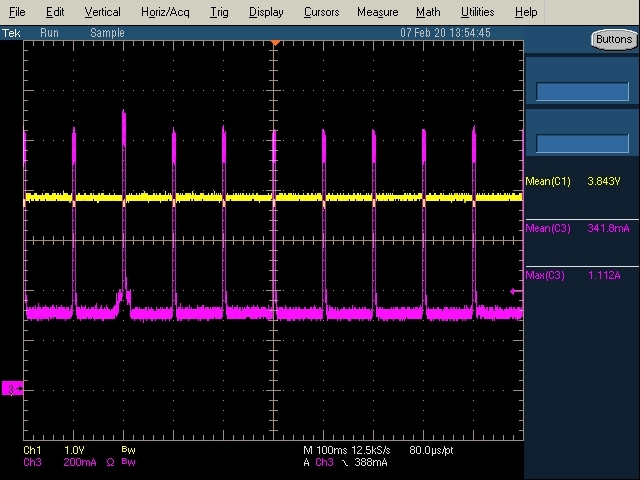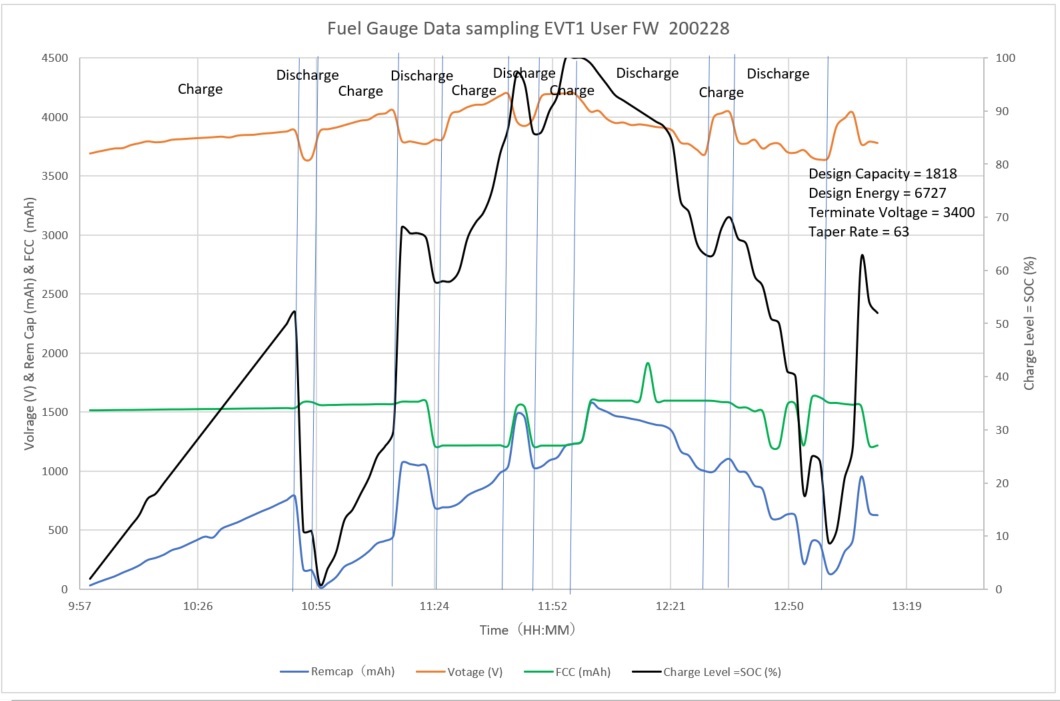Other Parts Discussed in Thread: BQ25890
Hello
We are BQ27421-G1 users.
I have a question about setting data memory.
Don't worry because the question number is our original.
Q9. Is the SOC accuracy better if the SOC smoothing function is enabled?
Q10. Is the value of Initial MaxLoad a value assumed by the user in advance?
Doesn't affect the algorithm because the initial value is updated?
Q11. 6.4.2.1.2 Is Ra Filter set by User? Learning and rewriting?
Q12. What is Delta Voltage?(Min Delta Voltage、Max Delta Voltage)
Q13. Can RASH current load (peak1.2A length 10msec) be average current and coulomb count accurately?
(Load Current sample.jpg)
Q14 Is it correct to set Default Design Cap to the same value as Design Capacity?
Q15. 6.4.2.1.12 Maximum Simulation Rate, Minimum Simulation Rate Is it not necessary to set it?
Q16 Is it better to charge and discharge until the primary charge (charging completion) after setting Data Memory?
Can you expect SOC stability?
Q17 As shown in this SOC_graph, if you discharge while charging and then charge while discharging after setting the data memory,
the SOC will probably fluctuate rapidly due to voltage fluctuations. Is this because the data memory cannot be set properly and correctly? (SOC_graph.jpg)
Q18. The charging voltage of CHG_IC (BQ25890) is 4.208V. Should the value of "V at Chg Term" be adjusted to CHG_IC?
Q19. Which of the data memory settings can be automatically rewritten periodically?
Where is it in bq27421-G1Technical Reference?
Q20. 6.4.1.5.1 What happens if RMFCC of Operation Configuration (OpConfig) Register II is not set?
Will FCC and RemainingCap change?
Thank you



